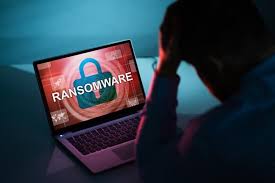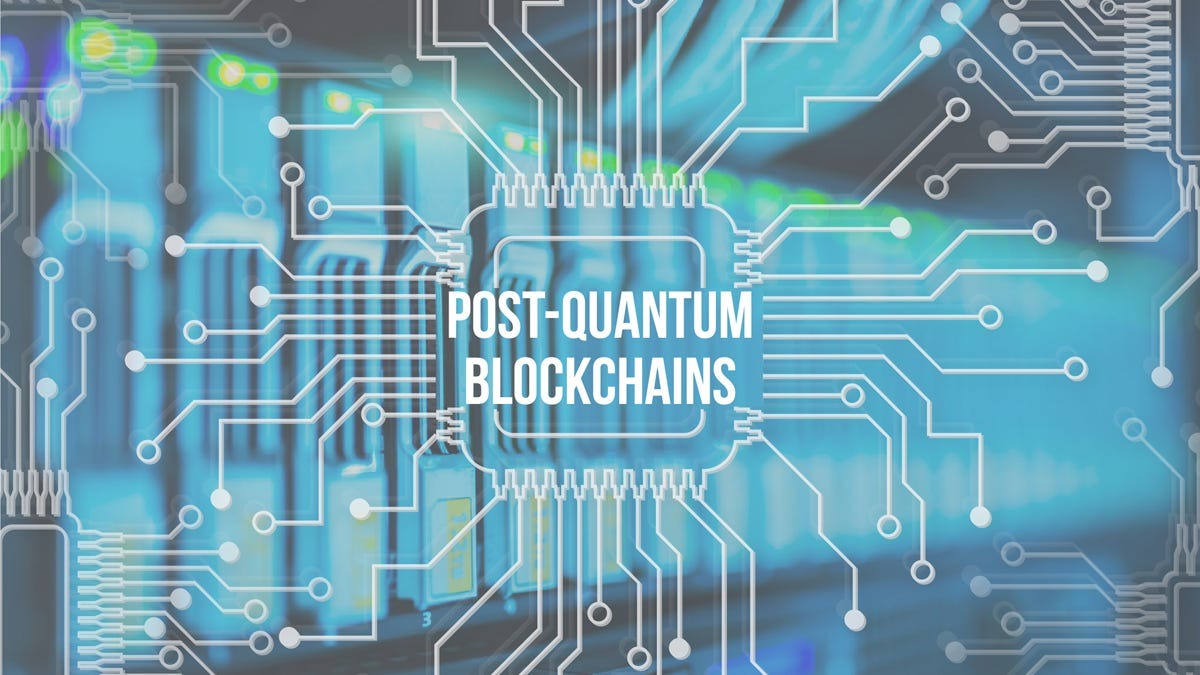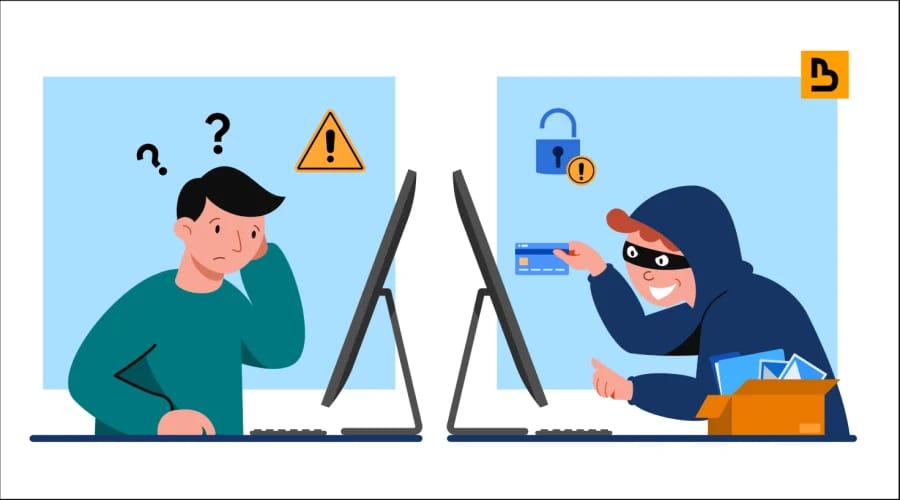
Ransomware-as-a-Service (RaaS) evolution
Ransomware-as-a-Service has transformed cybercrime into an accessible, profitable ecosystem. From simple ransomware kits to sophisticated platforms with affiliate programs, RaaS enables non-technical actors to launch attacks on high-value targets. Cryptocurrency facilitates anonymous payments, while developers profit from affiliates’ ransoms.
✨ Raghav Jain

Introduction
Cybercrime has evolved dramatically over the past decade, and one of the most concerning developments is Ransomware-as-a-Service (RaaS). Just like legitimate software services, RaaS allows cybercriminals to rent ransomware tools and infrastructure to launch attacks without needing deep technical knowledge. This evolution has made ransomware more accessible, profitable, and widespread, targeting individuals, businesses, and even critical infrastructure.
Understanding the RaaS ecosystem is crucial for organizations, security professionals, and individuals to anticipate threats, strengthen defenses, and reduce the impact of ransomware attacks. In this article, we’ll explore the history, growth, techniques, and defense strategies associated with RaaS, along with practical tips to safeguard digital assets. Ransomware-as-a-Service, commonly abbreviated as RaaS, represents a significant evolution in the world of cybercrime, fundamentally transforming how malicious actors distribute, manage, and profit from ransomware attacks. Ransomware itself has existed for decades, originally emerging in the late 1980s with primitive forms like the AIDS Trojan. These early iterations were relatively unsophisticated and primarily relied on physical media such as floppy disks to infect victims. They demanded small ransoms and were often targeted toward individual users rather than organizations. However, the cybercrime landscape has dramatically shifted since then, evolving into a highly organized and commercially driven ecosystem in which RaaS plays a central role.
The core concept of RaaS is similar to legitimate Software-as-a-Service models, but it is applied in a criminal context. In this model, skilled cybercriminals develop ransomware software and offer it to other criminals for a fee or a share of the ransom payments. This division of labor allows individuals without advanced technical skills to conduct ransomware attacks effectively, widening the pool of potential cybercriminals and significantly increasing the scale of attacks. The service often includes technical support, development updates, and even access to pre-built affiliate networks, making ransomware deployment as simple as using any commercial software product. By outsourcing the complex aspects of ransomware creation and management, cybercriminals can focus on distribution, targeting, and monetization, thereby maximizing efficiency and profitability.
The RaaS model gained prominence around 2015 and has grown rapidly since then. Initially, ransomware attacks were mostly standalone incidents carried out by small groups or individuals. Attackers manually infected victims’ systems, often targeting personal computers with limited sophistication. As ransomware evolved, however, it became apparent that monetization could be more efficient and lucrative if the operation resembled a business model. Enter RaaS: it offered a structured, affiliate-based framework where software developers supplied the ransomware tool, and affiliates carried out the attacks, sharing profits according to pre-agreed percentages. This innovation drastically lowered the barrier to entry, leading to a surge in attacks globally, affecting individuals, small businesses, and even large organizations.
Over the years, RaaS platforms have become more sophisticated, offering features previously reserved for professional software. Modern RaaS kits often include user-friendly dashboards that allow affiliates to track infections, ransom payments, and even victim compliance rates. These dashboards provide real-time analytics, enabling attackers to optimize their campaigns, adjust ransom amounts, and identify the most profitable targets. Additionally, developers continually update their ransomware to evade detection by antivirus programs and enhance encryption techniques, maintaining the malware’s effectiveness over time. In many ways, the evolution of RaaS mirrors legitimate software development, with continuous updates, support services, and user experience improvements, but in a criminal context.
One of the significant developments in the evolution of RaaS is the diversification of targeting strategies. Early ransomware primarily targeted individual users, but modern RaaS operations focus on organizations, governments, and critical infrastructure, where ransoms can reach millions of dollars. High-profile attacks on hospitals, educational institutions, and municipal governments demonstrate the scale and sophistication of RaaS operations today. Affiliates often use phishing campaigns, exploit kits, and compromised Remote Desktop Protocol (RDP) connections to gain initial access. Once inside the network, the ransomware encrypts data and demands payment, frequently in cryptocurrencies like Bitcoin or Monero, which provide a level of anonymity. The professionalization of these operations has made ransomware attacks a high-revenue criminal enterprise.
The commercialization of RaaS has also led to a competitive ecosystem, where multiple RaaS operators compete for affiliates and market share. Some platforms even offer tiered subscription models, advanced features like double extortion (where data is not only encrypted but also stolen and threatened to be leaked), and affiliate training. This commercialization has made RaaS an attractive option for many cybercriminals, leading to a global proliferation of ransomware attacks. Consequently, cybersecurity firms and law enforcement agencies have had to adapt, developing advanced threat intelligence, monitoring RaaS marketplaces on the dark web, and engaging in international cooperation to counter these sophisticated operations.
As RaaS has matured, the impact on businesses and society has grown considerably. Financial losses from ransomware attacks now run into billions of dollars annually, including ransom payments, operational downtime, reputational damage, and regulatory fines. Organizations are increasingly forced to adopt comprehensive cybersecurity measures, including employee training, backup protocols, and robust incident response plans. At the same time, the continuous evolution of RaaS challenges these defenses, as attackers innovate faster than security measures can always adapt. The evolution of ransomware-as-a-service has effectively transformed cybercrime into a scalable, professional, and high-profit industry, making it one of the most pressing cybersecurity threats of the modern era.
In conclusion, Ransomware-as-a-Service represents a dramatic evolution in cybercrime, moving from rudimentary, opportunistic attacks to a sophisticated, service-oriented model that has professionalized ransomware distribution. By lowering technical barriers and creating a global marketplace for ransomware tools, RaaS has exponentially increased the frequency, scale, and profitability of attacks. The model mimics legitimate software services in structure and customer support, yet it is deployed for illegal purposes, making it a uniquely challenging threat for cybersecurity professionals. As the RaaS ecosystem continues to innovate, organizations must remain vigilant and proactive, adopting layered defenses and staying informed about the evolving tactics of cybercriminals. RaaS is no longer just a tool; it is an industry, and its evolution reflects the broader trend of cybercrime becoming increasingly organized, commercialized, and globally interconnected.
What is Ransomware-as-a-Service (RaaS)?
RaaS is a cybercrime business model in which developers of ransomware lease their malicious software to affiliates or wannabe cybercriminals. These affiliates then deploy ransomware to victims and share a portion of the ransom payments with the developers.
Key components of RaaS:
- Ransomware Developer: Creates, maintains, and updates the ransomware software.
- Affiliates: Individuals or groups who deploy ransomware against targets.
- Payment Infrastructure: Usually includes cryptocurrency wallets and anonymization tools to collect ransom without tracing.
- Support Systems: Some RaaS providers offer dashboards, tutorials, and customer support, just like legitimate SaaS platforms.
RaaS lowers the technical barrier for cybercrime, allowing people with minimal hacking skills to execute sophisticated ransomware attacks.
Why RaaS Became Popular
- Profitability
- Ransomware is highly lucrative. Organizations and individuals are often willing to pay to regain access to encrypted data. RaaS lets developers earn a cut from each successful attack without executing it themselves.
- Accessibility
- Even novice cybercriminals can launch attacks by purchasing or renting ransomware from RaaS platforms.
- Anonymity and Security
- RaaS operators use advanced methods like Tor networks, cryptocurrency, and encrypted communication, making it hard to trace the cybercriminals.
- Scalability
- With multiple affiliates deploying ransomware worldwide, RaaS developers can profit on a large scale without direct involvement.
The Evolution of RaaS
RaaS has grown in sophistication since its inception. Its evolution can be traced in several stages:
1. Early Stage: DIY Ransomware
Initially, ransomware attacks were carried out by individuals who coded their own malware. These early attacks, often called “locker ransomware,” encrypted a few files and demanded small payments, typically in pre-Bitcoin currencies or gift cards.
2. Ransomware Kits (2013–2016)
Cybercriminals started selling prepackaged ransomware kits on underground forums. These kits made it easier for non-technical users to deploy malware. Developers earned a one-time fee, and buyers had to manage attacks and payments themselves.
3. Ransomware-as-a-Service Platforms (2016–2019)
The RaaS model emerged around 2016. Developers began offering subscriptions, dashboards, and affiliate programs. Popular examples include Cerber, Satan, and GandCrab, which provided step-by-step instructions for deployment, customer support, and revenue sharing with affiliates.
4. Professionalization and Corporate-Style Operations (2020–Present)
RaaS has become highly professional, resembling legitimate SaaS businesses. Features include:
- Affiliate dashboards with analytics on infections and payments
- Negotiation services for ransoms
- Customer support for affiliates
- Continuous software updates to bypass antivirus detection
RaaS groups now operate like organized cybercrime enterprises, targeting large corporations, hospitals, and even critical infrastructure.
Techniques Used in Modern RaaS Attacks
- Phishing Emails
- Most RaaS attacks begin with phishing campaigns containing malicious links or attachments.
- Exploiting Vulnerabilities
- Attackers exploit unpatched software, weak passwords, or unsecured remote access tools.
- Double and Triple Extortion
- Double extortion: Encrypt data and threaten to leak it online if ransom isn’t paid.
- Triple extortion: Add DDoS attacks or extort partners and clients of the victim organization.
- Evolving Encryption Methods
- Modern ransomware uses advanced cryptography to make file recovery impossible without paying.
- Affiliate-Developer Collaboration
- Developers constantly update ransomware and share new techniques with affiliates, ensuring attacks remain effective against antivirus solutions.
Impact of RaaS on Businesses and Individuals
- Financial Losses
- Ransom payments, downtime, lost productivity, and recovery costs often run into millions.
- Data Breach and Privacy Risks
- Sensitive customer, employee, and operational data can be exposed or sold on dark web markets.
- Reputation Damage
- Businesses may lose trust from clients, partners, and investors.
- Regulatory Penalties
- Fines and legal implications may arise if sensitive data breaches are reported late or handled poorly.
Defending Against RaaS Threats
While RaaS attacks are sophisticated, proactive measures can reduce the risk:
- Regular Software Updates
- Patch vulnerabilities in operating systems, applications, and security software.
- Employee Training
- Educate staff to identify phishing emails, suspicious links, and attachments.
- Backup Strategy
- Maintain secure, offline backups of critical data to reduce ransom dependency.
- Multi-Layered Security
- Implement firewalls, antivirus software, and intrusion detection systems.
- Limit Access Privileges
- Use the principle of least privilege to restrict access to sensitive data and network areas.
- Incident Response Plan
- Have a clear plan to contain and recover from ransomware attacks quickly.
Daily Cyber Hygiene Practices
For Businesses:
- Conduct regular vulnerability scans
- Update antivirus and anti-malware definitions
- Monitor network traffic for anomalies
- Train employees on cybersecurity awareness
For Individuals:
- Avoid opening unsolicited emails
- Use strong, unique passwords for each account
- Enable two-factor authentication
- Backup important files regularly
Weekly Cybersecurity Practices
- Test backups for recoverability
- Review firewall and security logs
- Rotate passwords for sensitive accounts
- Conduct phishing simulation exercises
Common Myths About RaaS: Busted!
“Only large corporations are at risk.”
→ False. Small businesses and individuals are frequent targets due to weaker defenses.
“Paying the ransom guarantees data recovery.”
→ Not true. Victims may still lose data or face repeat attacks.
“RaaS is too technical for ordinary cybercriminals.”
→ Wrong. That’s the point of RaaS—it allows anyone to launch attacks with minimal technical skills.
“Ransomware attacks are always preventable.”
→ Not completely. Even the most secure systems can be exploited, but risk can be significantly reduced.
Sample RaaS Awareness Routine for Organizations
Daily:
- Monitor emails and network traffic for suspicious activity
- Check antivirus and endpoint security alerts
Midweek:
- Conduct internal phishing drills
- Update software and security patches
Weekend:
- Backup critical data offline
- Review system access logs
Monthly:
- Train employees on ransomware trends
- Simulate ransomware attacks to test readiness
Conclusion
The evolution of Ransomware-as-a-Service (RaaS) has transformed cybercrime into a highly organized, scalable, and profitable business model. With developers, affiliates, and double/extortion tactics, modern RaaS attacks pose significant risks to individuals, small businesses, and large organizations alike.
Understanding the RaaS ecosystem, adopting strong cybersecurity practices, and maintaining proactive defense routines can mitigate threats effectively. Organizations must treat cybersecurity like a continuous, evolving process, while individuals must remain vigilant about email hygiene, backups, and secure password practices.
RaaS demonstrates how technology can be used both constructively and destructively. Awareness, preparedness, and consistent security measures are your best tools to combat these digital threats.
Stay alert, update regularly, backup consistently, and educate constantly. Cyber resilience is the best defense against RaaS evolution.
Q&A Section
Q1:- What is Ransomware-as-a-Service (RaaS)?
Ans :- RaaS is a business model where cybercriminals provide ready-made ransomware tools to others in exchange for a share of the ransom, enabling non-technical actors to launch attacks.
Q2:- How did RaaS originate?
Ans :- RaaS emerged in the mid-2010s as ransomware developers sought to monetize their malware by offering subscription-based services, lowering the barrier for cybercrime participation.
Q3:- What are the key components of a RaaS operation?
Ans :- Typical components include the ransomware code, management dashboards for affiliates, payment handling systems, and customer support-like guidance for attackers.
Q4:- How has RaaS evolved over time?
Ans :- RaaS has shifted from basic ransomware kits to sophisticated, modular platforms with affiliate programs, automated negotiations, and targeted attacks on large organizations for higher profits.
Q5:- What industries are most targeted by RaaS attacks?
Ans :- Healthcare, finance, government, and critical infrastructure are prime targets due to the high likelihood of ransom payment and the severe impact of service disruption.
Q6:- How do cybercriminals profit from RaaS?
Ans :- Developers earn a percentage of ransom payments from affiliates, often taking 20–40%, while affiliates gain access to powerful malware without needing technical expertise.
Q7:- What role does cryptocurrency play in RaaS?
Ans :- Cryptocurrency ensures semi-anonymous, untraceable payments, making ransom collection and laundering easier for criminals and complicating law enforcement efforts.
Q8:- What are some notable RaaS groups?
Ans :- Groups like REvil, DarkSide, and Conti have popularized the RaaS model, executing high-profile attacks and demonstrating the scalability and profitability of this cybercrime approach.
Q9:- How do organizations defend against RaaS attacks?
Ans :- Preventive measures include regular backups, employee phishing awareness, endpoint protection, network segmentation, and rapid incident response plans.
Q10:- What does the future of RaaS look like?
Ans :- RaaS is expected to become more automated, use AI for targeting, and expand globally, making collaboration between cybersecurity agencies and organizations essential to mitigate its impact.
Similar Articles
Find more relatable content in similar Articles

Digital inclusion: designing d..
Designing technology for elder.. Read More

Post-quantum blockchains: desi..
Post-quantum blockchains explo.. Read More

The Alarming Rise of Cybercrim..
Cybercrime in India is rising.. Read More

Cloud PCs: Will Your Next Comp..
Cloud PCs are transforming the.. Read More
Explore Other Categories
Explore many different categories of articles ranging from Gadgets to Security
Smart Devices, Gear & Innovations
Discover in-depth reviews, hands-on experiences, and expert insights on the newest gadgets—from smartphones to smartwatches, headphones, wearables, and everything in between. Stay ahead with the latest in tech gear
Apps That Power Your World
Explore essential mobile and desktop applications across all platforms. From productivity boosters to creative tools, we cover updates, recommendations, and how-tos to make your digital life easier and more efficient.
Tomorrow's Technology, Today's Insights
Dive into the world of emerging technologies, AI breakthroughs, space tech, robotics, and innovations shaping the future. Stay informed on what's next in the evolution of science and technology.
Protecting You in a Digital Age
Learn how to secure your data, protect your privacy, and understand the latest in online threats. We break down complex cybersecurity topics into practical advice for everyday users and professionals alike.
© 2025 Copyrights by rTechnology. All Rights Reserved.